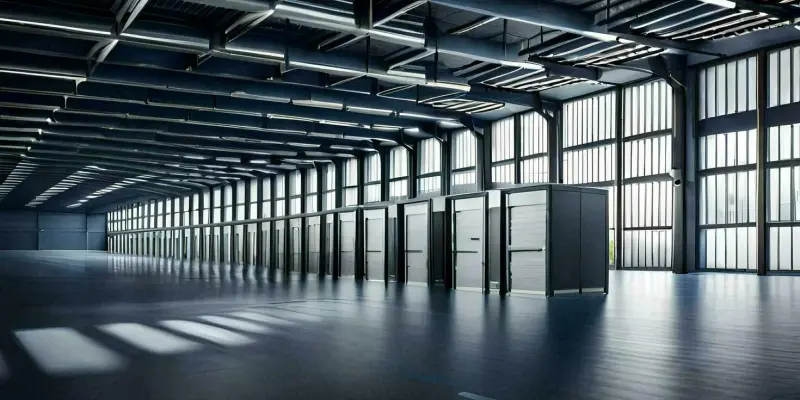The rapid advancements in artificial intelligence (AI) have placed immense demands on data center infrastructure. In 2024, a significant event highlighted the energy challenges faced by these centers: a major hyperscaler disclosed that its AI cluster’s power budget had doubled to over 300 megawatts (MW). This scenario underscores the urgent need to address AI’s boundless energy appetite and poses the question of whether existing infrastructure can sustain AI development without collapsing.
Understanding the Challenge
Rising Energy Demands
The digital economy heavily relies on data centers, whose energy consumption has surged alongside the rapid development of generative AI. These centers must innovate while adhering to tight energy constraints and sustainability mandates. The challenge lies not in AI’s transformative potential but in the infrastructure’s ability to handle its energy demands.
Differences in Workloads
AI workloads differ significantly from traditional computing tasks. While traditional workloads are latency-sensitive and transactional, AI tasks are throughput-intensive, demand massive parallelism, and require substantial memory and I/O bandwidth. Legacy data center architectures, designed for CPU-centric tasks, struggle to meet AI’s data movement and memory demands, creating performance bottlenecks known as the memory wall.
Tackling the Memory Wall
Disparity in Growth Rates
Processor performance, measured in floating point operations per second (FLOPS), has been increasing at a rate that outpaces memory bandwidth, creating inefficiencies and increased costs. This problem, akin to irrigating a large farm with a watering can, results in underutilized resources and energy waste.
Compute Express Link (CXL)
CXL technology addresses the memory wall issue by enabling low-latency, coherent communication between CPUs, GPUs, and memory. CXL allows systems to share and flexibly allocate memory resources, reducing the need for overprovisioned local memory and maximizing memory utilization. This innovation enhances system performance and reduces energy consumption.
Enhanced ECC
CXL-attached memory modules with advanced Error Correction Code (ECC) capabilities provide higher effective capacity without compromising reliability. This approach lowers system costs per gigabyte, allowing for larger memory pools and more efficient AI workload execution, ultimately reducing total energy consumption.
Overcoming Storage Bottlenecks
Innovations in SSD Technology
To address data storage challenges in AI pipelines, advancements in solid-state drive (SSD) technology are essential. Incorporating hardware-based write reduction and transparent data compression into SSD controllers provides a scalable and efficient data compression method, enhancing data transfer rates and reducing power consumption.
Energy Savings
These technological advancements conserve processor cycles and complete tasks more quickly, creating energy savings at the component, system, and data center levels. Even minor reductions in per-SSD power draw can lead to significant energy savings in large-scale high-performance training clusters, with the added benefit of reduced cooling requirements.
Ensuring Security and Efficiency
Role of Caliptra
As data center architectures evolve with distributed and interconnected resources via CXL, robust security measures become crucial. The open-source Root-of-Trust initiative, Caliptra, standardizes secure boot and attestation for CXL systems, ensuring secure and authenticated connections while reducing the risk of supply chain attacks.
Benefits of Secure Systems
Secure systems enhance resilience and prevent data breaches that necessitate costly and energy-intensive recovery operations. Integrating security at the hardware level mitigates vulnerabilities and prevents energy-wasting system remediation processes.
Towards Sustainable AI
New Architectural Paradigm
To sustainably scale AI advancements, data centers need an energy-aware architectural paradigm. This includes pooling memory across servers, employing advanced SSDs with integrated compression capabilities, utilizing domain-specific processing, and embedding security measures at the hardware level.
Essential Strategies
Essential strategies for this paradigm include using CXL to diminish redundancy, optimizing utilization, employing advanced SSDs with integrated compression capabilities to minimize compute overhead and energy consumption, and utilizing domain-specific processing to allocate tasks to the most suitable engines. Implementing these methods ensures data centers can manage AI’s energy demands efficiently. Additionally, safeguarding system integrity by embedding security measures at the hardware level helps prevent breaches and reduces the need for energy-draining remediation processes. Together, these approaches form a sustainable AI architecture that can meet evolving demands.
Powering AI Sustainably
The rapid advancements in artificial intelligence (AI) have placed immense strains on data center infrastructure. A pivotal event in 2024 underlined the immense energy challenges these centers face. A major hyperscaler revealed that its AI cluster’s power consumption had surged, pushing its power budget to over 300 megawatts (MW), effectively doubling previous allocations. This scenario not only highlights AI’s insatiable energy demands but also raises critical questions about the sustainability of current infrastructure. Can existing systems meet the burgeoning energy needs of AI development without buckling under pressure? As AI continues to evolve, addressing its energy consumption becomes increasingly essential. Ensuring that data centers can support AI’s growth without collapsing is crucial. Industry stakeholders must innovate and develop new strategies to accommodate AI’s soaring energy needs. The challenge is clear: balancing AI advancements with sustainable energy practices, making it a priority for the future of technological progress.

